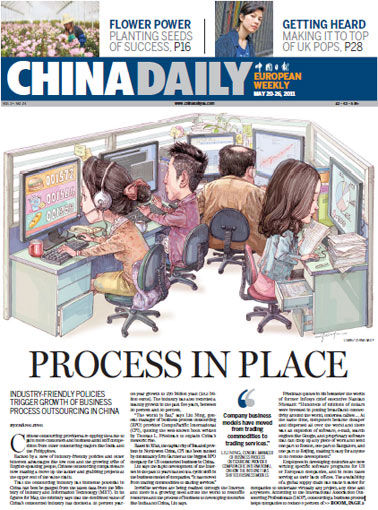Op-Ed Contributors
Asian fund so near yet so far
Updated: 2011-05-24 07:58
By Pradumna B. Rana (China Daily)
Asia has not forgotten the "Asian Monetary Fund" (AMF). In fact, the case for the AMF has been much strengthened by the difficulty in reforming the governance of the International Monetary Fund (IMF).
On May 4, the Association of Southeast Asian Nations (ASEAN) and its three Northeast Asian partners China, Japan and South Korea met in Hanoi, Vietnam, and took an important step toward establishing the AMF. The ASEAN+3 finance ministers met with Wei Benhua, newly appointed director of the ASEAN+3 Macroeconomic Research Office (AMRO), which will be based in Singapore. They instructed their deputies to review AMRO's organizational capacity and hoped that it would be operational soon. The setting up of AMRO is a critical step toward the establishment of AMF.
The other critical step in establishing the AMF was the Chiang Mai initiative (CMI) and its successor, the Chiang Mai initiative multilateralization (CMIM), which came into effect in March 2010. After the Asian financial crisis of 1997-1998, ASEAN+3 countries launched the CMI, comprising a network of bilateral swaps among each other, as part of their regional self-help mechanism. These swaps were "multilateralized" - that is, they could be withdrawn simultaneously with one agreement. This formed the CMIM, comprising the $120-billion crisis fund.
China and Japan agreed to contribute 32 percent each of the amount, South Korea 16 percent, with the ASEAN countries providing the remaining 20 percent. Within ASEAN, Indonesia, Malaysia, Thailand and Singapore agreed to contribute $4.77 billion each, and the Philippines $2.64 billion. In times of crisis, these five ASEAN member countries can withdraw 2.5 times their contribution.
But during the global economic crisis of 2008-2009 when a number of countries in the region faced a liquidity shortage, the CMI swaps could not be used because of the absence of a surveillance unit to conduct due diligence. Understandably, countries in the region were not willing to lend to each other under the CMI or CMIM without it.
So South Korea and Singapore had to rely on national reserves or trigger their swap agreements with non-regional and regional countries outside of the CMI. South Korea triggered its swap agreement with the United States and China, and Singapore with the US and Japan. A fully operational AMRO will fill this important void.
In Hanoi, the ministers welcomed the establishment of the AMRO which, as a surveillance unit of CMIM, will play an important role in monitoring and analyzing regional economies. It will contribute to early detection of risks, swift implementation of remedial actions, and effective decision-making of the CMIM. The ministers instructed their deputies to launch a study to strengthen the legal status of the AMRO to constitute an international organization with an international legal personality.
E-paper

Thawing out
After a deep freeze in sales during the recession, China’s air conditioner makers are bouncing back
Cool Iron lady
Of good and evil
Build on security initiatives
Specials

Memory lanes
Shanghai’s historic ALLEYS not just unique architecture but a way of life

Great expectations
Hong Kong-born singer songwriter rises to the top of the UK pops.

A diplomat of character
Belgian envoy draws on personal fascination to help build China ties.
